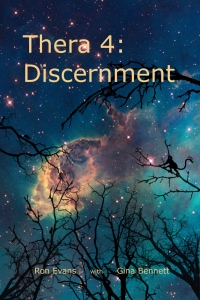OK, my intention to start blogging weekly again went off the rails. [sigh!] Now that it is September and we are mostly done with the summer running around it should be a little easier to blog regularly. …. I hope. Here are a couple things that have kept me from blogging … honest. 🙂
New Abode Purchase: One of our big ‘distractions’ lately has been the purchase of a new place. As I mentioned before, we currently live in Cranbrook, BC, but when Gina retires we want to move to Hope, BC to be closer to family. Gina found a listing in Hope that had almost all the attributes we wanted so we scheduled a viewing, did the 10 hour drive to Hope, looked at the townhouse, and then drove 10 hours back to Cranbrook. That was a crazy weekend. We subsequently made an offer, did some bargaining, agreed on a price, read a bunch of legal and strata documents, and sent our deposit to the Realtor late last week. We now know where we will be living starting early next summer. 🙂
Self-publishing on Hold Pending Re-write: My intention to self-publish Thera 4: Discernment has run up against a snag. We received feedback from our beta readers and I put the first chapter onto Critique Circle. Everyone seems to agree that I’ve put too much background information into the first chapter, so I need to sprinkle it through the novel more and have it come up more in the dialog as needed instead of in ‘aside paragraphs’. It’s a little disheartening, because that will be a lot of work and I had thought we were almost ready to publish. Then I have to remember I started this project as a learning experience among other things and I feel a little better about it … because I am learning a lot. What did I expect? … So it’s going to be a month or 3 before we are to the point where we can think about publishing. I’ll keep you posted on that.
*** WARNING Political Content Below ***
This blog is not intended to be a platform for political commentary, but with the federal election looming on October 19th, I will let some of my views show through here. If you don’t want to read political stuff stop reading now! 😉
Federal Election: As everyone in Canada knows, we are into a federal election. This will be a bit of a distraction for me because I’m supporting the Green Party of Canada and will be doing some volunteer work for them. A couple of the reason’s I’m supporting the Greens are:
- Climate change is the single most important issue of our day. We, as a species, need to stop dumping CO2 into our atmosphere. It is warming our planet’s climate at an alarming rate. The CO2 we’ve already put into our atmosphere will have some dramatic effects even if we turned off all CO2 sources today. The longer we keep dumping CO2 into our atmosphere the worse it’s going to be for our children and all of our descendants. Previous Canadian governments have been slow to act and the current government has taken us backward on this issue. While I know the Liberals and the NDP will take this issue more seriously than the Conservatives, it is a central part of the Green Party’s platform and I want their message heard.
- Education (including fundamental research) and Health Care are investments in the Canadian people, not business ventures. Using a business model for these services puts priorities in the wrong place; short term monetary gain for the government. If we, instead, perceive these as long-term investments in the Canadian people, then it becomes the mandate of the government to adequately support education and healthcare that every Canadian can access equally as needed. I believe this investment in Canadians will pay Canada back many times over (in much more than simple monetary terms) during the lifetime of each citizen . The Green party supports this vision in several ways including a pledge to remove tuition fees and increased critical support for health care.
- There are a number of other issues where I think the Green Party including electoral reform* and inter party collaboration.** Both of these are strongly supported by the Greens.
— Ron Evans (September 2015)
*Canada has a multi party system, but our electoral system is an antiquated “first past the post” system that only works in a 2 party system. As a result a party can receive the majority of the parliamentary seats and form a majority government even if they have not received the majority of the popular vote. (A case in point is our current Conservative government that thinks it speaks for Canadians even though 60.4% of Canadians voted against them in the 2011 election.) We need a system of proportional representation so the make-up of parliament will represent how Canadians actually voted.
**The Green party promotes cooperation and collaboration with other parties, but the 3 major parties are very partisan. I want to see our politicians working together for the good of our nation, not squabbling over partisan politics.
